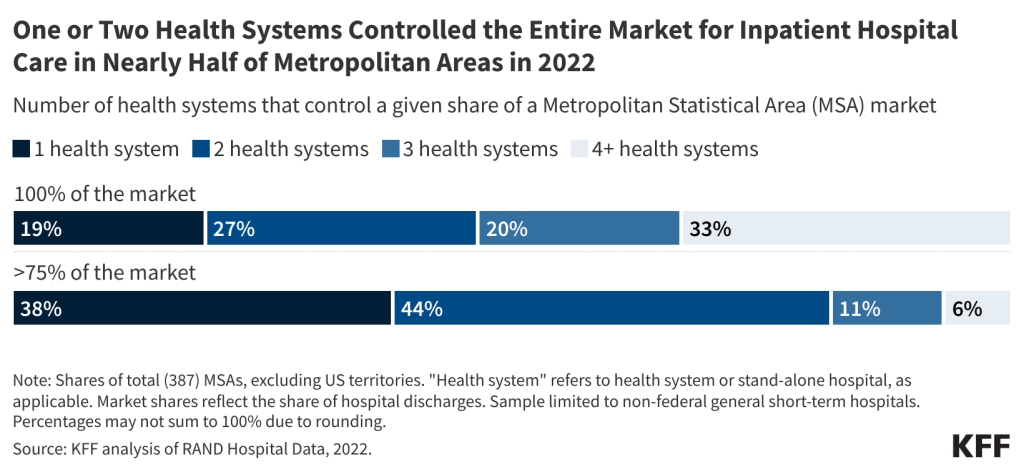
In 2022, nearly half (47%) of metropolitan areas across the nation had only one or two hospitals or health systems offering general inpatient hospital care, according to a recent KFF analysis.
The analysis explores the level of competition among hospitals amidst a surge of hospital consolidations that has garnered the attention of both state and federal regulators. Approximately one in five (19%) metropolitan statistical areas are served by just one hospital or health system, while more than a quarter (27%) are under the control of two hospitals or systems.
In a vast majority of metropolitan areas (82%), one or two hospitals or health systems accounted for at least three-quarters of all inpatient hospital discharges, thus fulfilling the criteria for highly concentrated markets as outlined by current federal antitrust standards.

The quantity of hospitals or health systems in a metropolitan area commonly increases with the population size of the region. A significant majority of smaller metropolitan areas (fewer than 200,000 residents) have only one or two hospitals or health systems providing inpatient care, while almost all of the largest areas (with at least one million residents) host a minimum of four hospitals or health systems.
Additional findings include:
- Almost all (97%) metropolitan areas exhibited highly concentrated markets for inpatient hospital care in 2022, as measured by the Herfindahl-Hirschman Index, which assesses the market shares of participants in a specific market. This metric is utilized by the Federal Trade Commission and Department of Justice in their current guidelines for evaluating hospital or health system mergers.
- Two-thirds (67%) of hospitals across the country were affiliated with health systems in 2022, an increase from 56% in 2010. This rise in affiliated hospitals impacted both rural and urban areas, despite the fact that nearly half (48%) of hospitals in rural regions remain independent of larger health systems.